Most water supplies contain very low levels of salt, but sometimes – perhaps due to the use of a water softener or your proximity to a salt water source – your water’s salt concentrations might be affecting its quality.
We’ve tested all the methods we could find for removing salt from water, and we’ve shared the 3 methods that worked best for us in this guide.

Table of Contents
⚗️ Method 1: Install A Reverse Osmosis System
Based on our own testing, reverse osmosis is the best solution to removing salt from drinking water.
How it Works
Reverse osmosis systems use membrane separation technology. They force water through a semi-permeable membrane with tiny pores of around 0.0001 microns, removing the majority of dissolved solids.
For drinking water treatment, you can buy a reverse osmosis system is most commonly installed as a countertop or under-sink system.
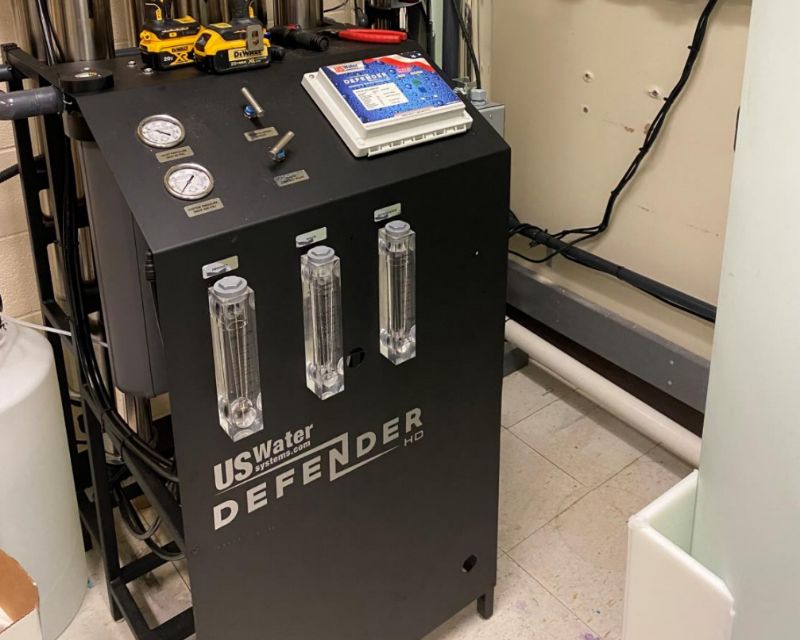
The Evidence
- The RO process is so effective at separating salt and water that it’s often used in large-scale seawater desalinating applications.
- We’ve tested a number of RO systems, which have all greatly reduced sodium in our water. The countertop RKIN U1 reduced sodium from 9.91 PPM to 1.2 PPM, and the under-sink Waterdrop G3 P800 reduced sodium from 9.33 PPM to 1.65 PPM.
Best For:
Folks with a big budget who want to remove sodium and purify their water with a comprehensive water treatment solution.
Pros of Reverse Osmosis for Removing Salt:
- Removes up to 99.99% sodium
- Also eliminates most other contaminants
- Improves water quality & safety
Cons of Reverse Osmosis for Removing Salt:
- Removes healthy minerals
- Expensive
- Produces a small amount of wastewater
🚰 Method 2: Use A Water Distillation System
Water distillation is another highly effective way to separate salt from water, but it’s not our number one pick because the distillation process takes a really long time.
How it Works
A water distillation works by boiling water until it vaporizes. The steam is then cooled and condensed into a separate container, and the impurities with higher boiling points than water – including the separated salt particles – are left behind in the boiling chamber.
You can buy a countertop water distiller that distills water in batches. Add a batch of water to the boiling chamber, then switch the distiller on and wait for the clean container to fill with purified water. It takes around 4-6 hours for a 1-gallon batch of distilled water to be produced.
The Evidence
- A University of Nebraska–Lincoln publication produced by an engineering specialist and water quality educator lists sodium as one of the impurities removed by water distillers.
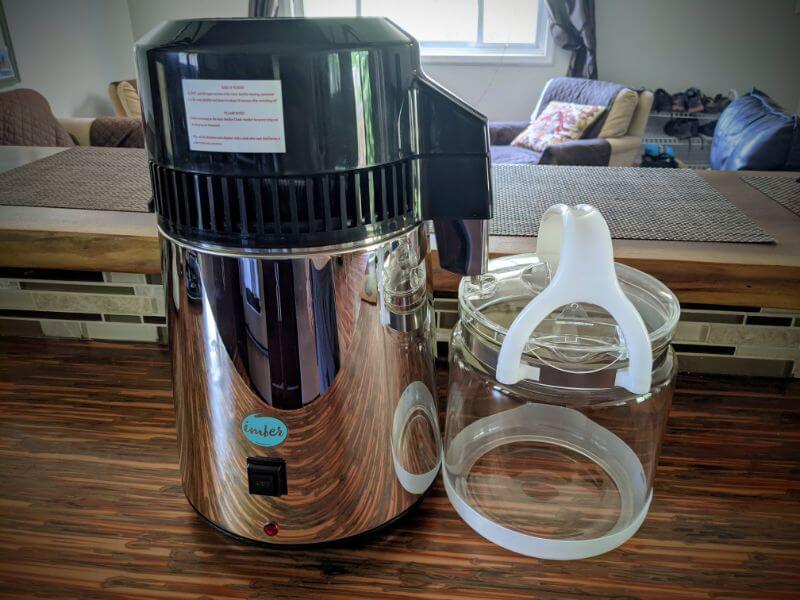
Best For:
Anyone who wants a mid-priced, low-maintenance but time-consuming way to remove salt from their drinking water.
Pros of Water Distillation for Removing Salt:
- Greatly reduces or removes sodium
- Purifies water
- Ensures water is safe to drink
Cons of Water Distillation for Removing Salt:
- Lacks healthy minerals
- Flat water taste
- Time-consuming distillation process
📤 Method 3: Consider A Deionization System
If you want to remove salt from your water without purifying it, a water deionizer is our top recommended system.
How it Works
Deionization is a process that removes all dissolved salts and minerals from water.
You can deionize water at home using a deionizer water filtration system. This filtration system sends water through an electrically charged resin bed, which will grab onto the salts that give water a positive or negative charge. The water that leaves the unit is free from all dissolved salts.
A deionizing system regenerates occasionally to flush the resin bed and get rid of the collected ions.
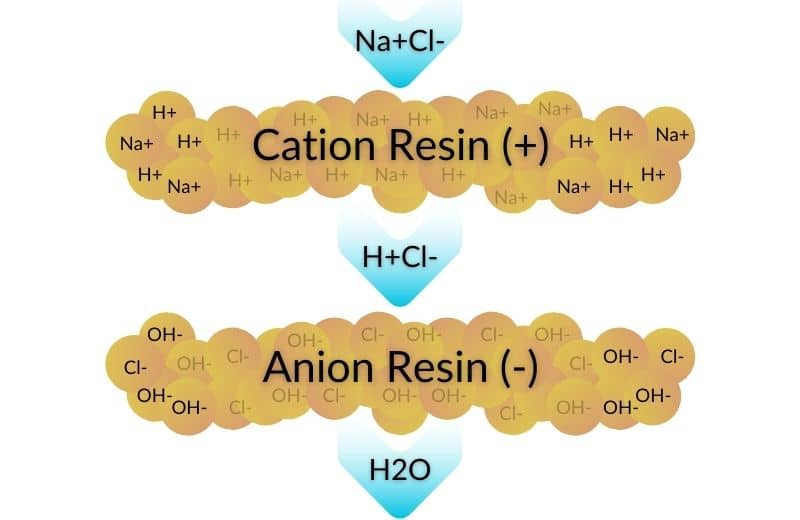
The Evidence
- A 2019 study on the electrosorptive removal of salt ions from water concluded that capacitive deionization was an “affordable technology” for reducing salt concentrations in brackish water.
Best For:
People who want to remove minerals and salts from their drinking water while retaining its other impurities.
Pros of Water Deionization for Removing Salt:
- Removes sodium & other ionic contaminants
- Can be used in applications that require deionized water (e.g. AC systems, aquariums, etc.)
Cons of Water Deionization for Removing Salt:
- Also removes healthy minerals
- Doesn’t reduce chemicals or non-ionic pollutants
- Not as widely available as other treatment systems
🔎 How Much Salt in Drinking Water is Safe?
You might prefer salt-free water personally, but low levels of sodium in tap water are considered safe – and, in moderation, salt is necessary for human health.
The EPA has produced a drinking water advisory for sodium that suggests the following concentrations of sodium in water used for human consumption:
- 30-60 parts per million (PPM) or milligrams per liter (mg/L) to prevent poor tastes
- 20 PPM or mg/L for people on very low sodium diets
For some context, we’re on a municipal water supply, and our sodium levels are usually detected at around 9-10 PPM – so no cause for concern.
Safe levels of sodium in water usually can’t be detected by taste. So, if your water tastes salty, it likely contains unsafe levels of sodium chloride. In short, it’s difficult to drink high concentrations of sodium without knowing about it.
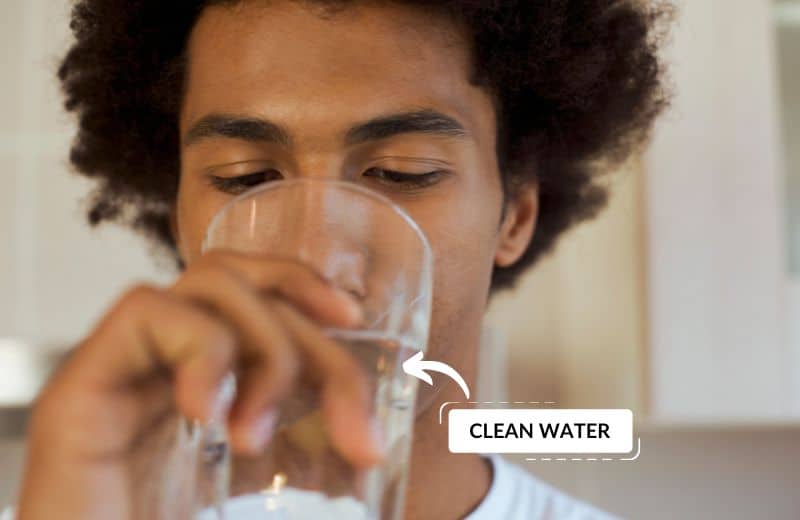
🤔 How Else Can You Limit Your Sodium Intake?
Some of the most effective ways to reduce your salt intake in your everyday life are:
- Limit how much sodium you’re eating. Check out Healthline for a list of high-sodium foods. Cut down on salty foods in your diet, and don’t season your foods with table salt.
- Use herbs, seasonings, and spices to add flavor. Try replacing table salt with herbs, spices, and seasonings, like onion and garlic powder, smoked paprika, and nutritional yeast. Avoid using seasoning mixes that contain added salt.
- Reduce your consumption of processed foods. Tinned soups, bread, pizza, processed rice and potato mixes, and processed meats usually contain preservatives and flavor enhancers that increase their sodium content.
- Watch out for beverages containing sodium. Certain energy drinks and sports drinks often contain salt. It’s best to stay hydrated with plain drinking water.
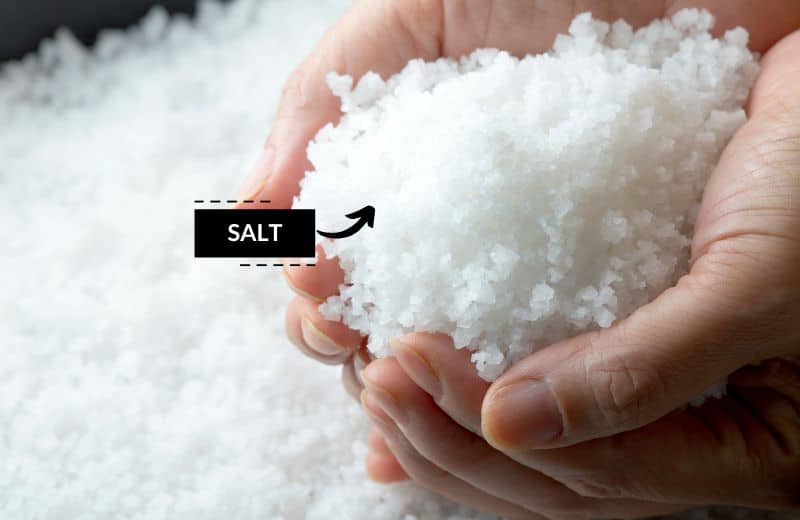
📑 Final Word
We hope this guide helped you to determine how to remove salt from water in your home.
If you’re using a water softening system that adds salt to your water, you might prefer to avoid the use of salt altogether. Salt-free water softeners are an effective no-sodium alternative to ion exchange water softeners. You could also use potassium chloride instead of sodium ions in your salt-based softener.
👨🔧 We’ve shared a dedicated guide on how to separate salt from soft water if you want to do some further reading.
